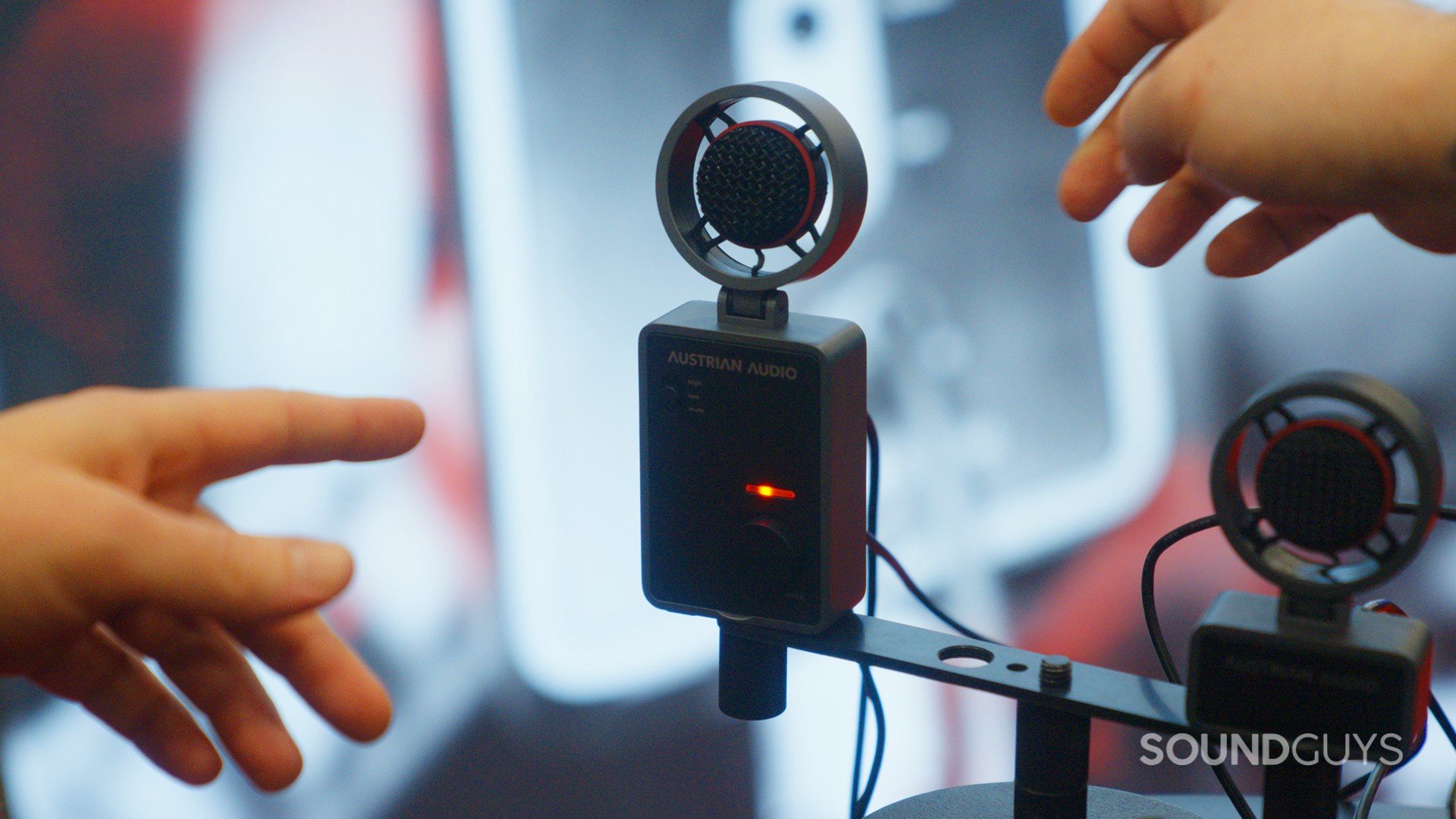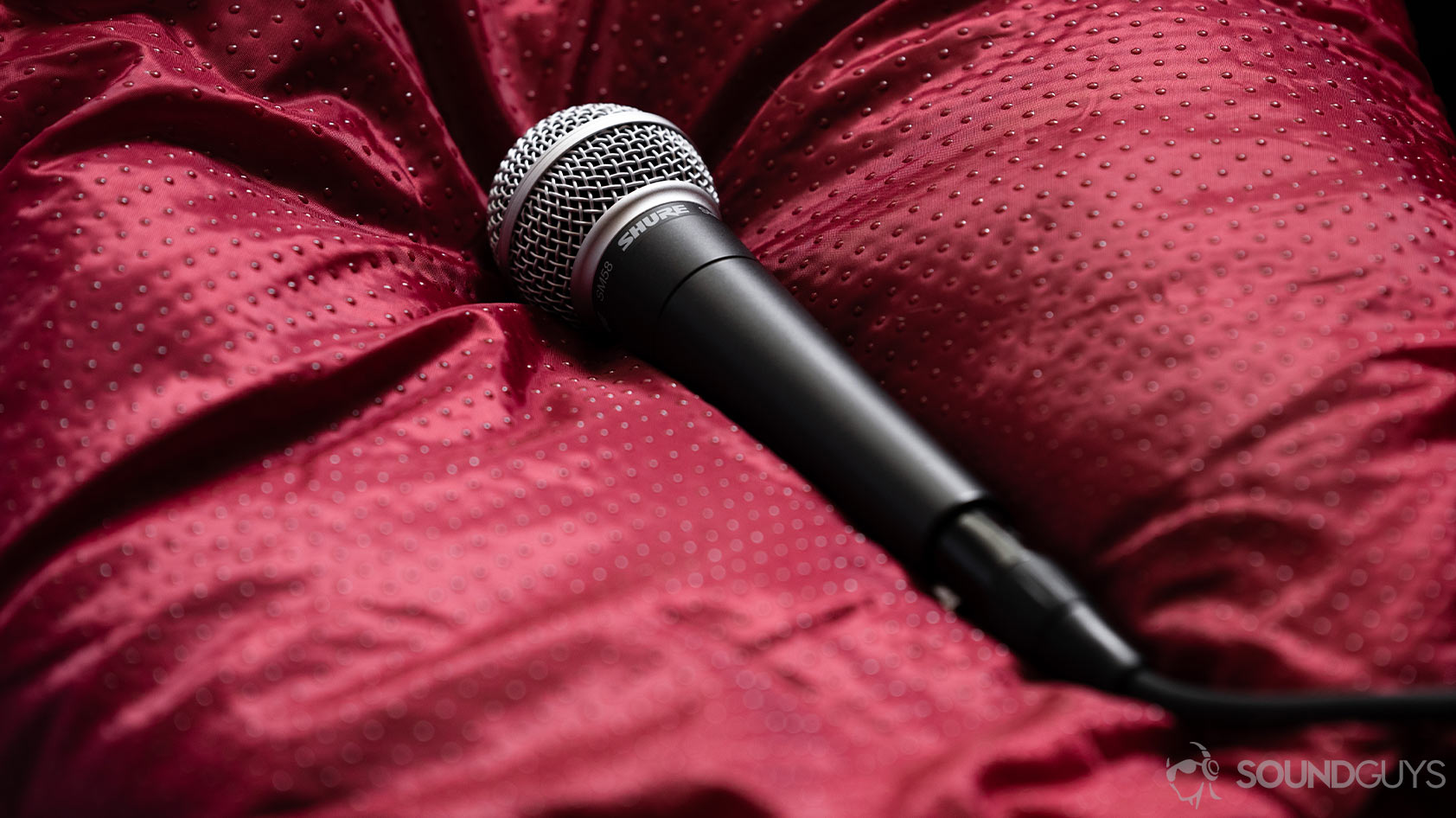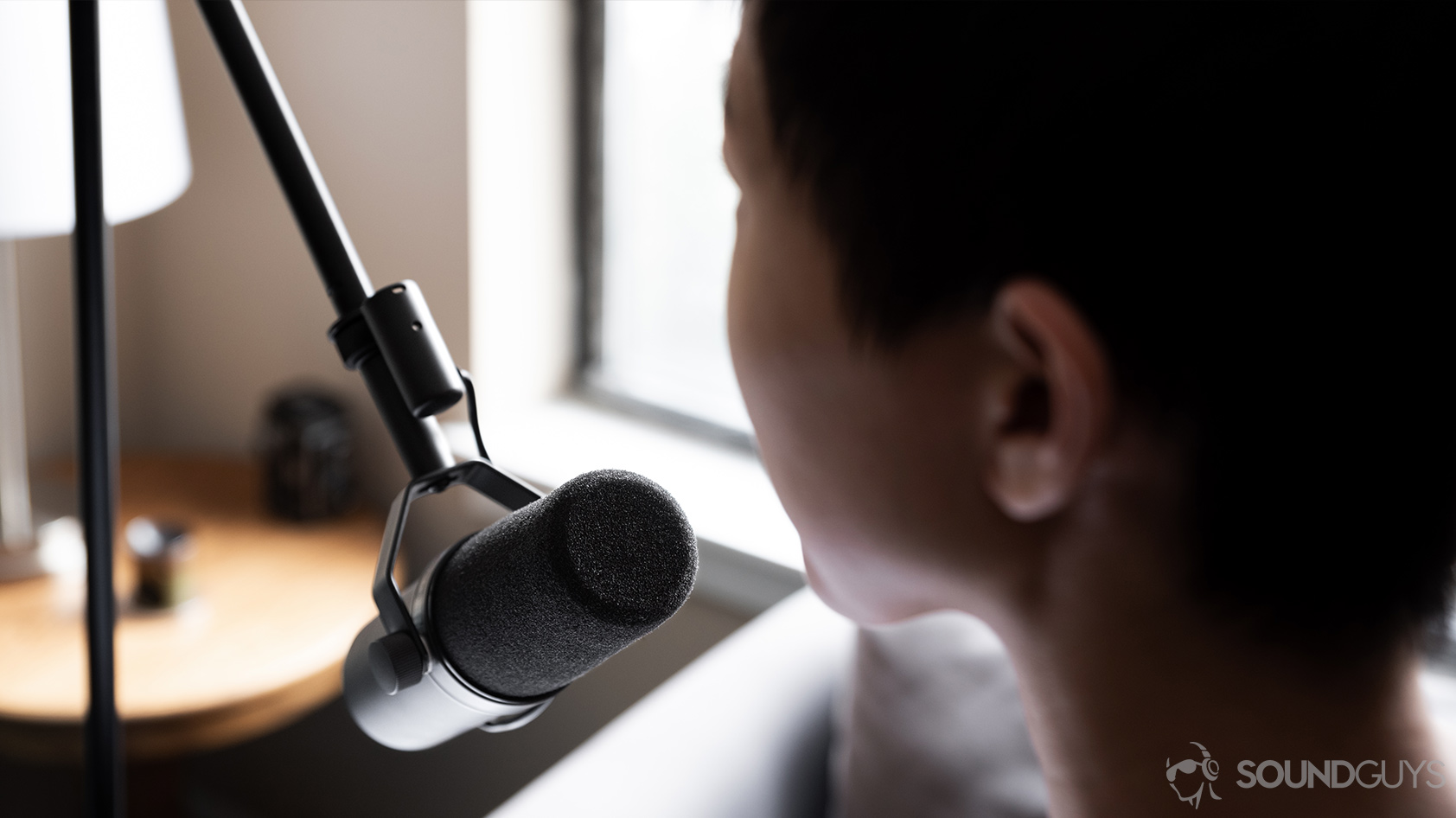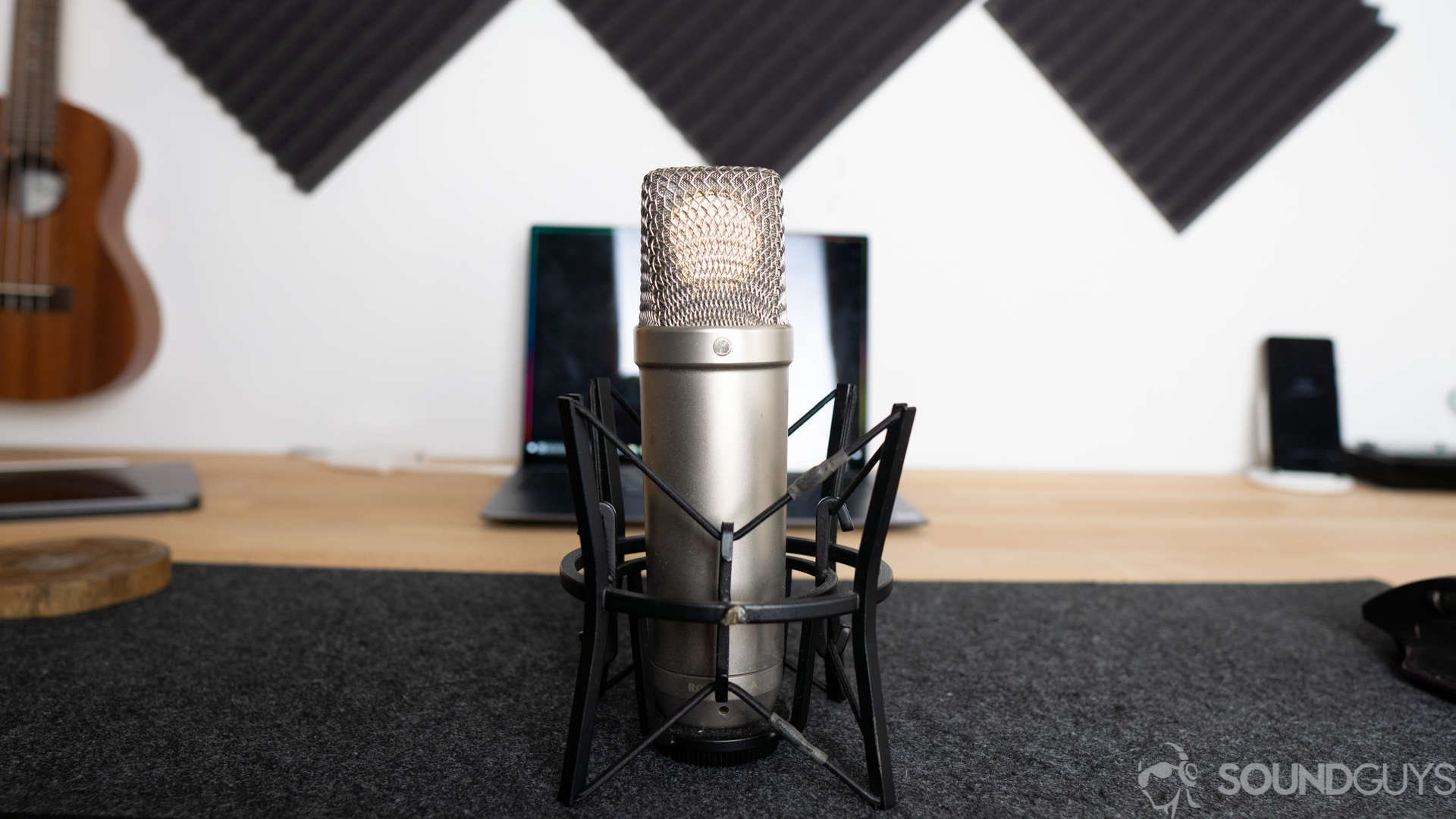All products featured are independently chosen by us. However, SoundGuys may receive a commission on orders placed through its retail links. See our ethics statement.
Why vocal mics are the theatre industry's unsung hero
October 28, 2024

Vocal microphones come in all manner of shapes and sizes. Their application is far-reaching, from delicate ribbon mics to tiny condenser lavaliers. Live theatre is a major beneficiary, allowing complex staging, interesting sound design, and clear vocals in large venues. Having designed and operated sound for a recent Edinburgh Fringe Festival performance, the importance of theatre vocal mics has never been closer to home. Whether in fringe theatre or on Broadway, microphones are a staple in the theatre industry on and off the stage.
All the world’s a (mic-less) stage

Humans have enjoyed the live theatre medium for thousands of years without microphones. The world’s first theatre — the Theatre of Dionysus — was designed in the sixth century BC to create a natural echo and amplify sound. The audience arrangement around the stage is circular and uniform, allowing each attendee to share a similar auditory experience. The tiered and ascending seating arrangement adds to this, creating resonance and carrying the human voice longer distances. Many famous venues, like Shakespeare’s Globe in London and the new Las Vegas Sphere, have been designed similarly since.
Shakespeare’s Globe Theatre has a capacity of 1500 patrons and operates a policy of authenticity for many of its performances. Subsequently, most shows are void of large-scale sound systems and microphones. Actors are highly trained and have expertise in proper vocal projection. This draws on the strength of their core, often generating a raw, vulnerable, and intimate performance. Each breath is audible and small hesitations carry as much narrative weight as the dialogue.
Most productions at Shakespeare's Globe theatre are conducted without the aid of modern microphones, although some are used to assist the hard of hearing.
Without microphones, performers can convey text and music with total control over dynamics and tone. Modulating volumes and punctuation are hugely important in line delivery. As such, many actors enjoy performing without having to contend with sound equipment. This is also true of Globe Theatre musicians who play reconstructions of period instruments without amplification or electronic aids. Having stood in the yard and sat in the surrounding gallery, I can vouch for the venue’s pleasing and authentic acoustics.
However, while Shakespeare’s Globe actors and musicians do not directly use microphones during performances, the theatre operates a fixed hearing assistance system called Induction Loop. This uses stage microphones, an amplifier, and a wire loop around the venue to create a magnetic field. This is subsequently picked up by hearing aids or cochlear implants and converted into sound. The microphones are positioned as such to reduce the prominence of unwanted ambient noise. Consequently, those hard of hearing and with other accessibility needs can enjoy a more pleasing listening experience.
Cats got your tongue?

The Las Vegas Sphere is much different, though. While it adorns the traditional amphitheater seating arrangement, it has a capacity of nearly 19000 people and owns the spatial audio HOLOPLOT sound system. This uses 167000 individual speaker drivers, 1600 speaker arrays, and 300 mobile modules to fill 875000 square feet of acoustic space. Unlike the Globe Theatre, the Las Vegas Sphere would be nearly impossible to fill without performer microphones. Loudspeakers, subwoofers, and microphones all help amplify voices and music in live theatre. These can be utilized so that every audience member can hear the performer regardless of where they sit. It also allows subtle nuances like whispers, sighs, and laughter to be audible further from the stage.
Theatre vocal mics are used extensively in musicals. Without them, performer’s voices would likely get lost under loud orchestration and backing tracks. Microphones allow the sound designer to balance the volume of each cast member’s voice and apply effects such as reverb, delay, and echo. This is necessary when mixing live music and can create a wall of sound that is particularly difficult to achieve without microphones.
Theatre vocal mics allow sound engineers to mix instruments and voices more easily to create a pleasing wall of sound.
Modern sound design is a much richer art form than just composing music. Nowadays, it encompasses live or recorded music, digital effects, ambiance, foley, and more. As such, sound designers require theatre vocal mics and amplification to immerse the audience in a compelling and realistic auditory space. For example, Punch Drunk’s production of Viola’s Room is an immersive, audio-driven experience that uses headphones to guide the audience through a dimly lit maze. Voiced by Helena Bonham Carter, it would have been impossible to achieve without the use of microphones and amplification technologies.
Spatial sound design is increasingly popular among high-end theatre makers. This uses microphones in different areas of an auditorium to play back audio through speakers around the theatre. This can be particularly effective when amplifying an actor’s voice and making it sound like it’s coming from around the audience or in the distance. Such techniques can add spatial depth to performances and create a unique and interesting auditory experience. Sound designers may use wired and wireless lavalier, headset, overhead, and boundary microphones to achieve this.
Testing, one, two, three

Performers and hearing loops are not the only reasons for using microphones in theatre. Production staff and crew members often use microphones to execute complicated backstage systems. For example, large-scale shows with elaborate set designs require stage managers to coordinate crew members and make scene changes smoothly and quietly. Staff can use microphones to respond to cues without a line of sight of the stage manager. This makes the workflow easier and allows staff to work more independently. Crew can also inform other staff members to position actors and props at the correct entrances and exits to the stage without distracting the audience.
Stage managers can also use microphones to communicate with other technical crew including lighting and sound designers in real time. This is handy for cueing the beginning and end of a performance, lighting and sound effects, and scene changes. Some productions use special effects like fog machines, trapdoors, and pyrotechnics, requiring precise coordination to be conducted safely. The stage crew can also use microphones to alert each other and the stage manager in an emergency. This maintains cast and crew safety even when visual cues are missed in fast-paced productions.
Stage crews often use wireless headset microphones to communicate with one another backstage.
Given the complexity of using amplified sound in live theatre, it is important to make adjustments on the fly. Sound designers can communicate with actors and crew members to correct microphone placements and adjust sound levels accordingly. This can prevent feedback and other unwanted interferences from ruining a performance. This is especially prominent in shows with audience participation or amplification.
Sound designers are continually finding inventive ways to use vocal mics in theatre. For example, microphones can be used backstage in small venues for voiceovers and overdubs. They can also synchronize with video projections or apply strange robotic sound effects to voices. Live theatre is forever changing, and microphones will continue to play an important role in the evolution of vocal projection, sound design, and backstage management.
But what do you think? Are microphones important in all theatre applications, or is proper vocal projection still paramount to hearing dialogue and singing in plays and musicals?
Are performer microphones important in live theatre?
Thank you for being part of our community. Read our Comment Policy before posting.